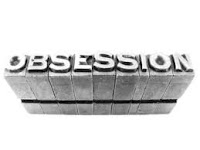We pianists, on the other hand, seem more likely to rely on imagery when approaching our instrument. Some respondents in the discussion refer to “caressing the key.” This is the first step toward coming up with a valid musical point of view. Like it or not, though, the piano is a machine subject to certain laws of physics. So, it behooves us as artists to figure out how to communicate our imagery through this machine to the listener.
However it is achieved, the hammer must cause the string to vibrate in order to produce the sound.
There are two types of attack: From above the key, feeling a slight slap against the pad of the finger, and from the key, a sort of springing away as if from a diving board. The former, especially when combined with weight and speed, can produce our most percussive sound, bringing to the fore the upper, more dissonant partials of the over-tone series. The latter, which is for most pianists the default attack, tends to be a more cushioned sound, favoring the consonant partials. So we can control the timbre to some extent. (Remember, in physics quality is determined by the number and prominence of overtones.)
Of course, movement after the note sounds is not going to change the sound. Only God can do that. Some pianists disagree, though. Brendel is one. He likes to vibrate on the key after depressing it. I think, as some have suggested, that the intention of the gesture before the sound is made can affect the sound produced. Both types of attack, by the way can be affected by weight and speed.
One respondent explained tone production at the piano as follows: “...So you can play from the key, from the bottom of the key or from the air above the key. That's only the beginning. The finger can go straight down, or it can go to the right, or go to the left, and anything in between. Using only the finger, you can move from the tip of the finger or from the second or third joint of the finger, or from behind the knuckles. The entire process of communication begins with your ear, and the audience will listen to you listening.”
I like the notion that communication begins with the ear, though I might change that to read “begins with the idea.” Still, listening is paramount to communicating. If you are going to play from the "bottom of the key," as he states, you would of course have to play from above the point of sound within the key, which is possible, though tonal possibilities are somewhat more limited. I use this often—I call it riding the key—in accompaniment patterns. I can't imagine how approaching from the side or the knuckle would change anything about the actual sound, as we are trying to get the hammer to strike the string.
He continues: “The knuckles remain loose with lots of air around them to allow the flow to continue from the front of the hand all the way to your shoulder without any tourniquet restricting that flow.” I’m not really sure what he means. But I notice that nowhere does he—or anyone else in the discussion—mention that pressing levers that cause hammers to strike strings produces the sound we make. Hammers striking strings is the end result of our effort at the key. I am, therefore, hard put to imagine how moving sideways into the key will change how the hammer strikes the string. Having said that, depressing the key with a certain intention, that is, to caress it, could affect how the key is depressed, the speed of descent and the amount of weight applied. I think this use of imagery is fine. I do it myself often. It can help connect us to the music and to the audience. But our connection should also be with the instrument itself and an understanding of its properties.
Maybe if we played more 20th century music, such as George Crumb, Henry Cowell and John Cage, we might develop a greater appreciation of the characteristics of our instrument and how to coax from it the effects we want. Additionally, why not offer courses in the maintenance, even the tuning, of the piano in college curricula? This, too, might give us greater insights into the mysteries of tone production.
 A former student writes: "I heard versions of movement one with detached bass measure 26-29 . (A version I preferred opted for pedaling measures 27 & 29.) But trying the 4 measures detached was difficult, as I found myself unable to keep the detached passage QUIET and even. Any hints?"
A former student writes: "I heard versions of movement one with detached bass measure 26-29 . (A version I preferred opted for pedaling measures 27 & 29.) But trying the 4 measures detached was difficult, as I found myself unable to keep the detached passage QUIET and even. Any hints?"








